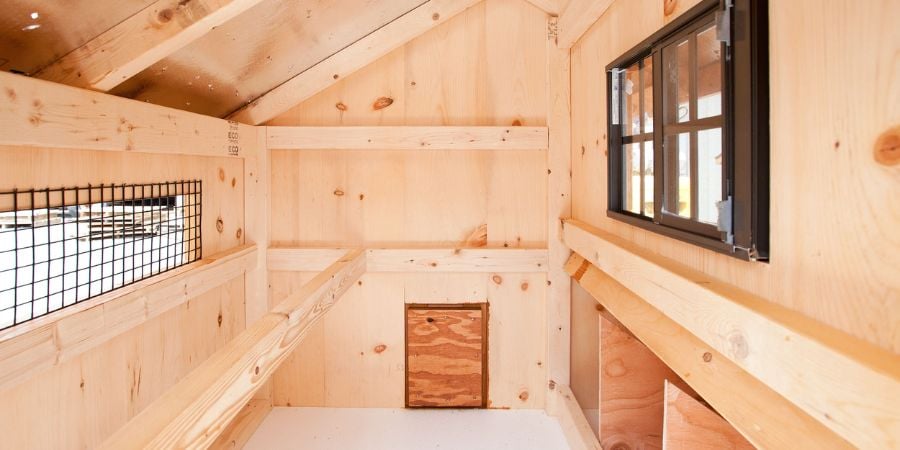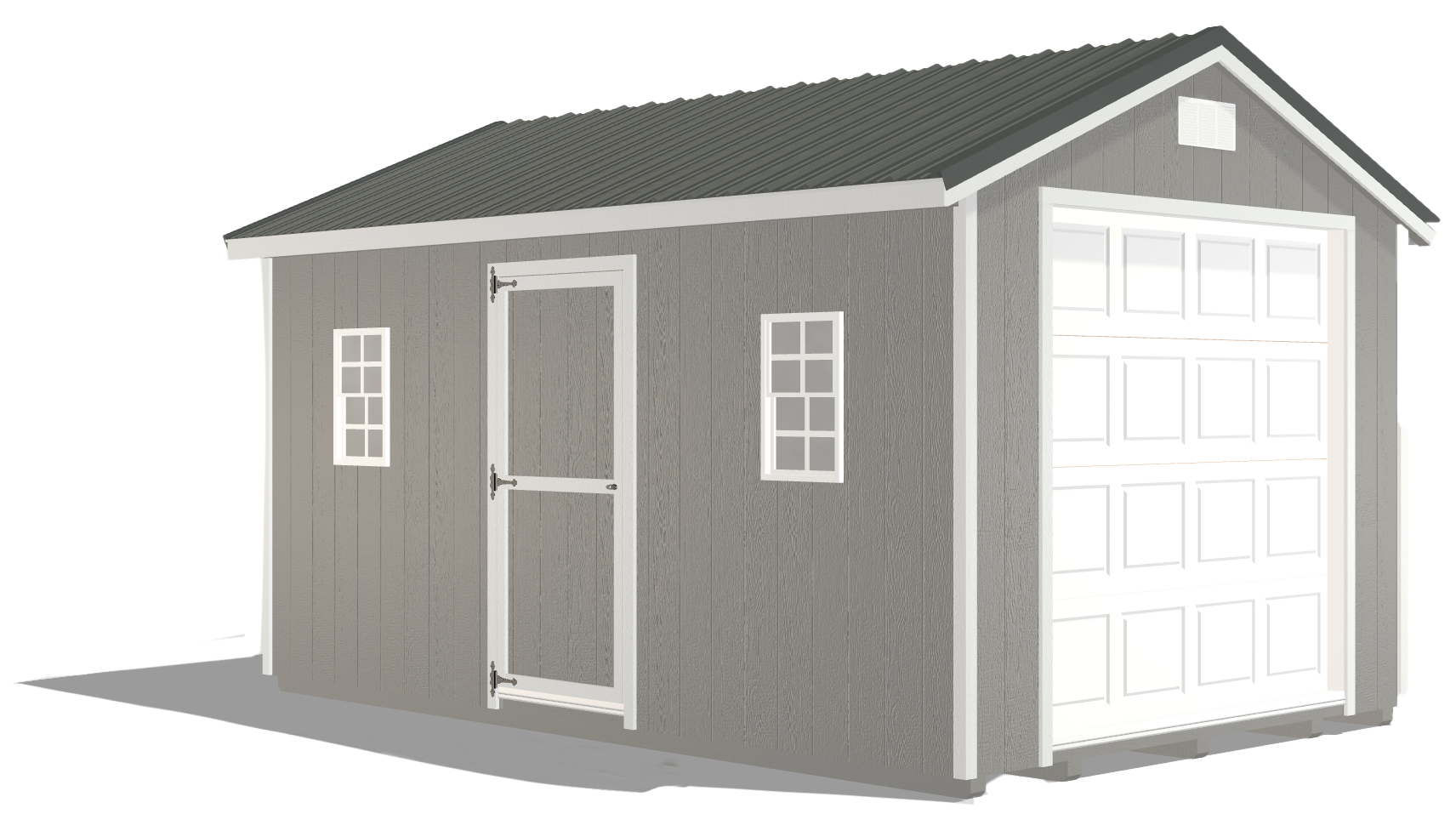Optimal Chicken Space: How Much Room Does a Chicken Need?
by Dakota Storage Buildings, on July 03, 2024

When it comes to raising chickens, understanding the importance of chicken coop designs cannot be overstated. Many backyard poultry enthusiasts and small-scale farmers struggle with insufficient space for their chickens, leading to stress, aggression, and lower productivity. However, by knowing how much room each chicken requires, you can create a more comfortable and stress-free environment that promotes their health and increases their egg production. This guide will help you determine the optimal amount of space needed to keep your chickens happy and healthy.
The Key to Thriving Chickens: Spacious and Comfortable Coops
Creating a spacious and comfortable environment is crucial for chickens to thrive. Adequate space allows chickens to engage in natural behaviors such as foraging, dust bathing, and roaming, which are essential for their well-being. These activities are not just instinctual but are critical for maintaining their physical health and reducing stress levels, which can directly affect their immune systems. Good space management promotes hygiene and health within the flock, leading to higher egg production and an improved quality of life for your chickens.
When chickens are not cramped, they are less likely to develop aggressive behaviors, which often leads to injuries or feather pecking among the flock. Space also allows for better air circulation, which reduces moisture levels and the risk of respiratory diseases, which are common in poorly ventilated coops. This makes it easier to maintain a clean environment, as waste can be more effectively managed and dispersed, preventing the build-up of ammonia and harmful bacteria. Ultimately, providing sufficient space is not just about comfort but about creating a sustainable and productive environment where chickens can flourish.
How Much Room Does a Chicken Need?
The amount of space required for chickens can vary based on several factors, including breed, age, and the size of the chickens.
Factors Affecting Space Requirements
Different breeds have different space requirements due to their varying sizes and activity levels. For example, larger breeds like Jersey Giants need more space than smaller breeds like Bantams because they are bigger and generally more active. As chickens grow from chicks to adults, their space needs change, requiring adjustments to their living conditions to accommodate their size and increased activity levels. The type of chicken, whether layers or broilers, also influences the amount of space needed. Broilers generally require more space than layers due to their faster growth rates and larger size.
Calculating the Minimum Space Requirements for Chickens

How much room does a chicken need? Experts generally recommend at least 2 to 4 square feet per chicken inside the coop and about 10 square feet per chicken in an outside run. So, to answer the question, “How much coop space per chicken?” you must do some simple math. For a chicken coop with six chickens, you will need 12 to 24 square feet. These recommendations are designed to ensure that each chicken has enough room to live comfortably and safely, reducing the risks associated with overcrowding such as disease transmission and feather pecking. It is important to calculate this space accurately, taking into account not only the number of chickens but also their specific needs based on breed and life stage. Providing adequate space is crucial not only for the health and well-being of the chickens but also for maintaining a high level of productivity in terms of egg laying and growth rates. Answering the question, “How big should a chicken coop be?” will depend on the number of chickens and your flock’s unique needs.
Benefits of Providing Ample Space for Chickens
Providing ample space for chickens is more than just a matter of comfort — it is crucial for their overall health and productivity. Ensuring that chickens have enough room to live and move can dramatically influence their stress levels and egg production, leading to significant benefits both for the birds and their keepers. Here is how adequate space can make all the difference.
Reduced Stress Levels
Chickens living in cramped conditions often exhibit higher stress levels, which can manifest in various health issues such as weakened immune systems, increased susceptibility to diseases, and behavioral problems like feather pecking. Stress in chickens can also lead to a decrease in overall productivity, affecting their growth and egg-laying capabilities. Providing adequate space not only reduces these stress levels but also enhances the overall well-being of the chickens. Happier, healthier chickens are more likely to be productive, exhibit natural behaviors, and maintain a peaceful social structure within the flock.
Improved Egg Production
Chickens that have enough room to move freely and comfortably are less stressed, which positively impacts their physiological health, allowing them to lay eggs more consistently. Space also allows for better nest box access, reduced competition for resources like food and water, and less aggressive interactions among chickens, all of these factors contribute to higher egg production rates. Ample space helps in maintaining cleaner living conditions, which reduces the chances of egg contamination and increases the overall quality of the eggs produced. This not only benefits the chickens but also provides better outcomes for poultry farmers and backyard chicken enthusiasts aiming for high-quality egg production.
Smart Strategies to Maximize Coop Space
Efficient use of space in chicken coop designs is essential for maintaining a healthy and stimulating environment for your chickens. Here are some innovative tips for maximizing the available space within your large chicken coop, ensuring your chickens have ample room to thrive without requiring additional land.

Use Vertical Space Effectively
Maximizing vertical space in chicken coop designs can significantly enhance the overall environment for your chickens without requiring additional ground area. By adding platforms or perches at different heights, you can increase the usable area and provide the chickens with more opportunities to engage in natural behaviors such as roosting and climbing. This can be particularly beneficial in promoting physical health and mental stimulation, which are important for their well-being.

Implement a Rotation System
Implementing a rotation system for grazing is an effective strategy to maintain the health of the land while providing chickens with a variety of fresh forage. This method involves dividing the outdoor space into different sections and allowing the chickens to graze in one section at a time. Rotating the chickens through various sections helps prevent soil depletion, promotes the regrowth of grasses and plants, provides the chickens with engaging environments, and reduces boredom.
Warning Signs of Overcrowding in Your Chicken Coop
Overcrowding in chicken coops can manifest in several distressing behaviors, signaling an urgent need for more space in a large chicken coop. These behaviors are often symptoms of stress and frustration among the birds.
Aggressive Behavior in Chicken Flocks
One of the most concerning outcomes of overcrowding is the increase in aggressive behavior, which disrupts the social structure and pecking order within the coop. This can include chickens attacking each other more frequently, competing aggressively for food and water resources, and even causing serious injuries. Such behavior not only harms the chickens physically but can also lead to long-term psychological stress and anxiety among the flock, further heightening the tension in an already cramped space.
A Decrease in Egg Production
A noticeable decline in egg production is a clear indicator that the environment may be too crowded. Chickens in cramped conditions experience higher stress levels, which can significantly impact their ability to lay eggs consistently. The stress associated with limited space can disrupt their natural laying cycles, leading to fewer eggs being produced. Overcrowded conditions can lead to poor nesting behaviors, as hens might not have access to clean, quiet areas to lay their eggs, further reducing overall egg production. This decrease not only affects the productivity of your flock but can also signify that the welfare of your chickens is compromised.
Why Regular Space Assessment is Essential to Chicken Health

Ensuring that your chickens have enough space is not a one-time task but an ongoing responsibility. Regular assessments and timely adjustments of your chicken coop and surrounding areas are crucial to accommodate the changing needs of your flock.
The Importance of Regular Chicken Coop Inspections
Regular inspections of your large chicken coop and run are critical to ensuring the health and well-being of your flock. These inspections allow you to catch potential issues with space, such as areas that are too cramped. During inspections, look for signs of wear and tear, check for security issues like holes or weak spots in fencing, and assess the cleanliness and orderliness of the feeding and nesting areas. These evaluations help you maintain an environment that supports the chickens' health, preventing problems related to overcrowding, disease spread, and general distress among the birds.
Adjust Your Coop as Your Chicken Flock Evolves
The dynamic nature of maintaining a chicken flock means that the space requirements can change over time. As chickens grow from chicks to fully grown adults, their space needs increase. Similarly, if you add more birds to your flock, or if breeds with different space requirements are introduced, adjustments need to be made to accommodate these changes. Regularly adapting your coop and run configurations to meet these evolving needs is essential for preventing overcrowding and maintaining a healthy, stress-free environment. This proactive approach ensures that all chickens have enough space to engage in natural behaviors, which is crucial for their physical health and mental well-being.
Start Your Journey to Chicken Farming Success
Understanding and providing adequate space for your chickens is essential for their health and your success in poultry farming. By following the guidelines outlined in this blog, you can ensure that your chickens have the best possible environment. Proper space not only supports their physical and mental well-being but also enhances their productivity and the overall hygiene of your setup. For more detailed information and additional tips on starting with backyard chickens, download our free "Beginners Guide To Getting Backyard Chickens" and set the foundation for a thriving and productive flock. This guide will give you step-by-step instructions and expert advice to help you get started on the right foot.

























